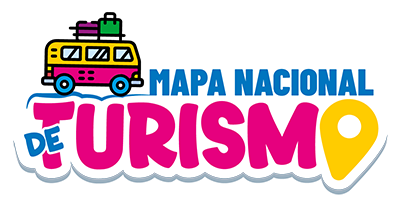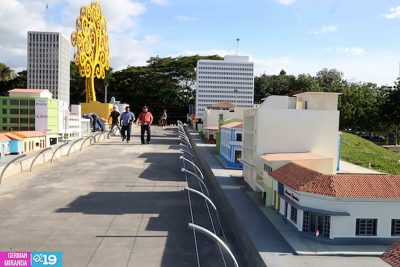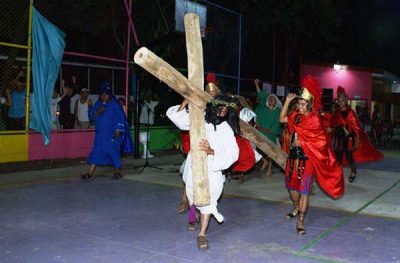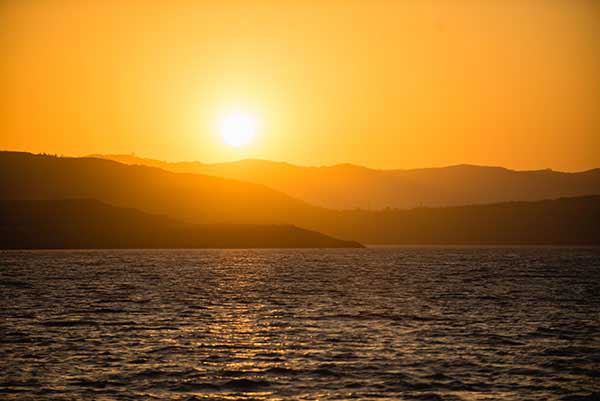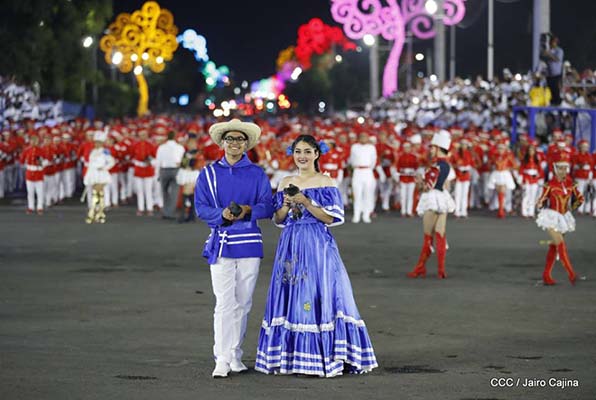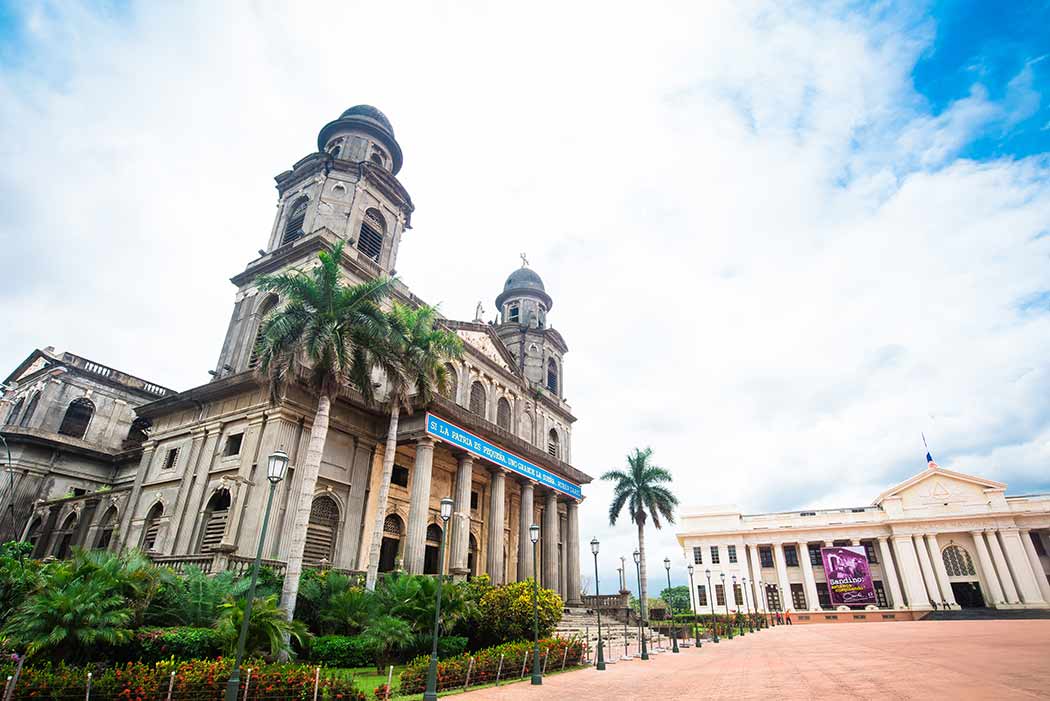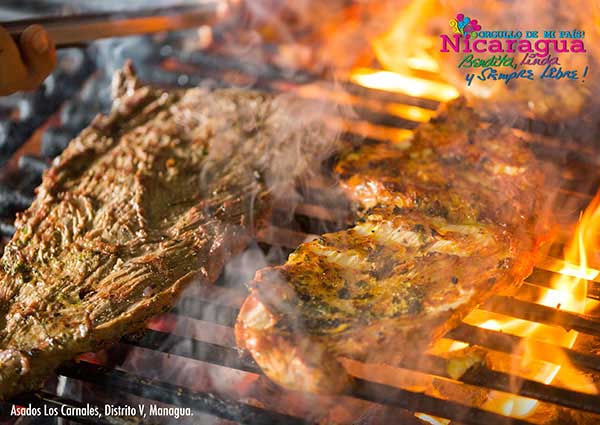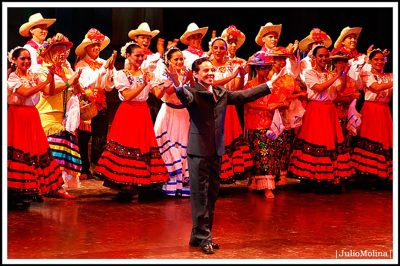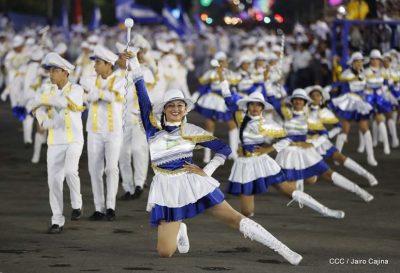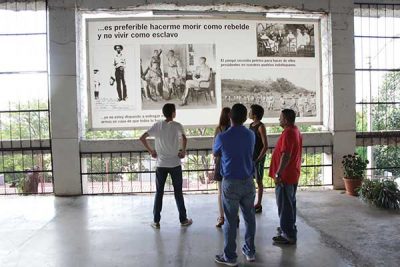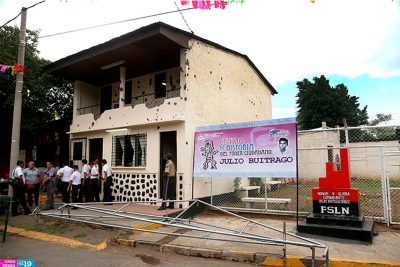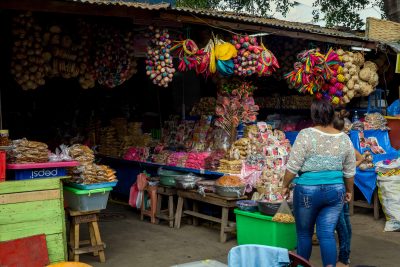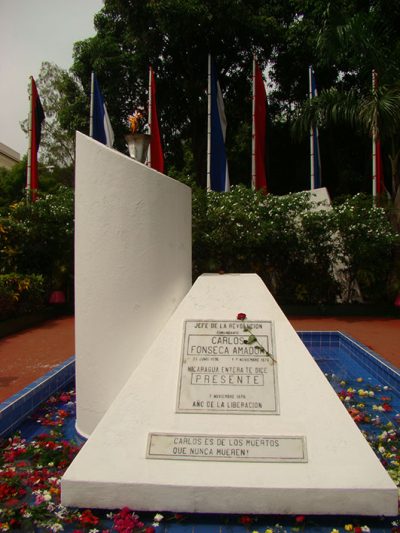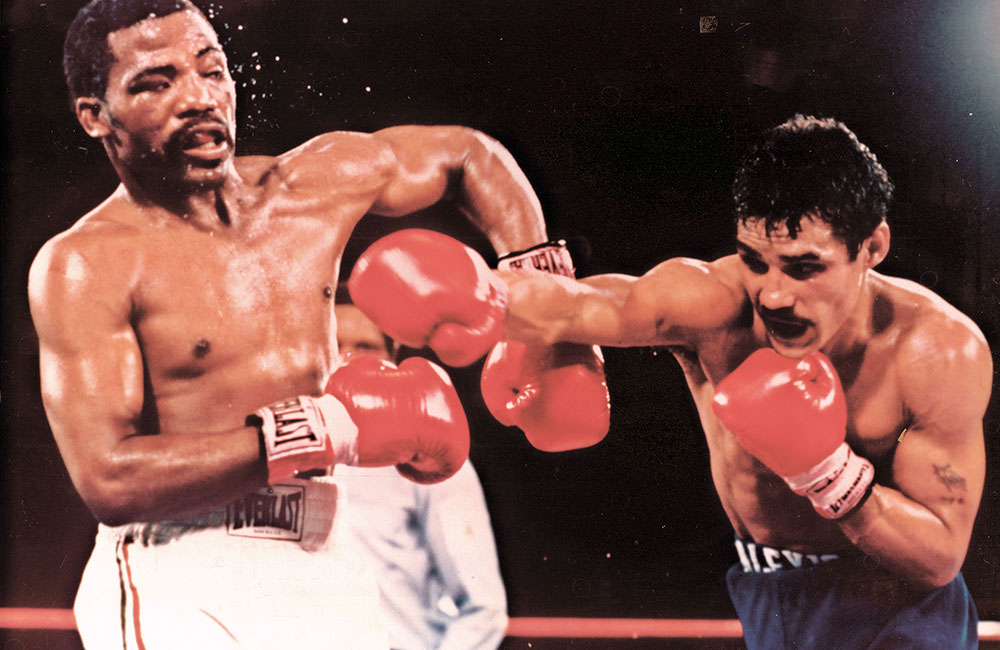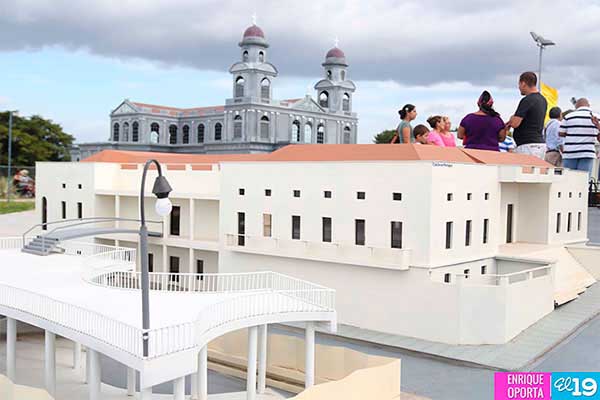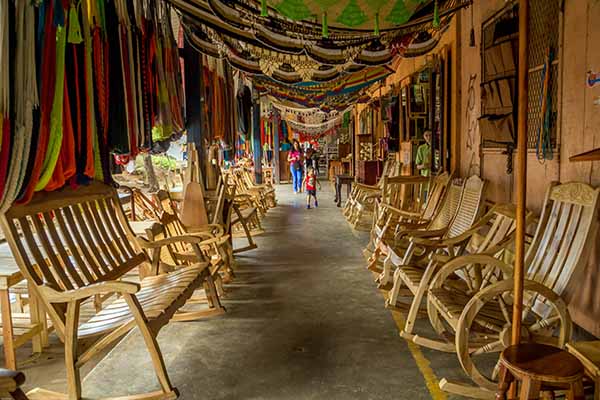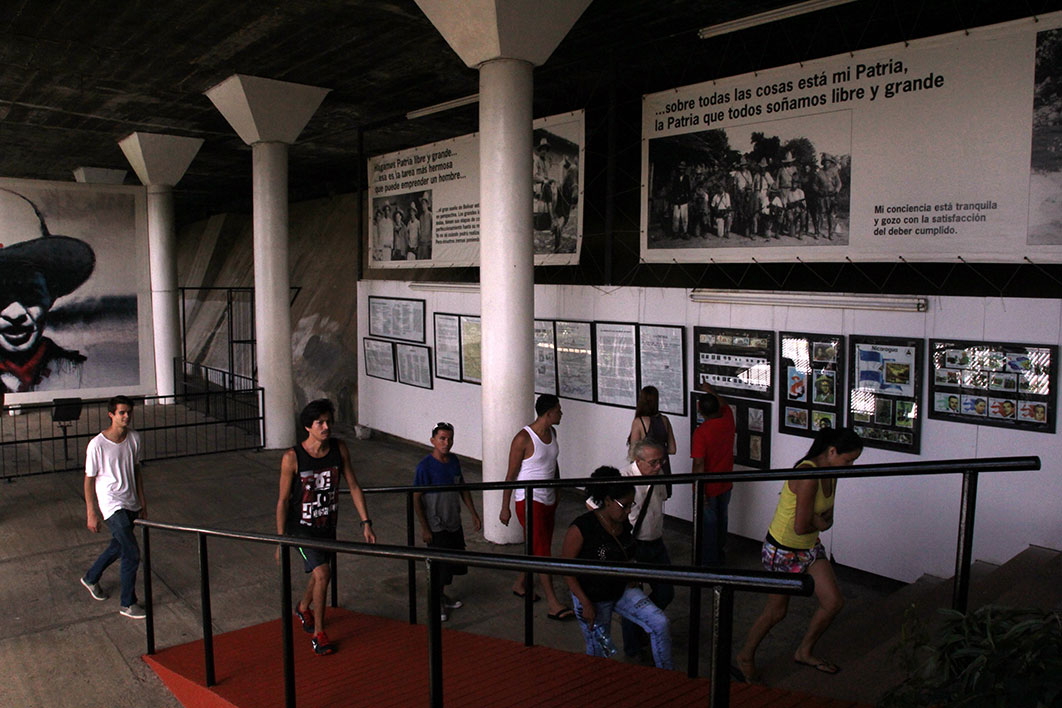Managua, in pre-Columbian times, was a Chorotega settlement scattered in several villages along the coast of Lake Managua and its lagoons.
In Managua there are various archaeological sites such as Villa Tiscapa and Las Delicias, in which ancient pre-Hispanic vestiges have been found and one of the most representative of Nicaragua: the footprints of Acahualinca.
In 1819 the town, originally known as Santiago de Managua, was elevated to the town of Santiago de Managua. 27 years later, in 1846, elevated to the city of Santiago de Managua and only six years later, in 1852 it was declared the capital of the republic.
Managua stands out for its magnificent public art, standing out, the architectural, sculptural monuments and murals, which are part of the urban landscape of the city. These monuments are part of the Cultural Heritage of the Nation and reflect the essence of the cultural, artistic, historical and socioeconomic values of the different stages of the development of the life of the managüenses and the country.
The streets of the capital and its squares have witnessed events that have changed national history, such as the triumph of the Sandinista revolution on July 19, 1979, with the entry into the city of the guerrillas after the final offensive that defeated the dictator Anastasio Somoza Debayle, ending the dynasty that ruled and oppressed Nicaragua for 45 years.
I walked the Plaza of the Revolution, a spacious place, which has witnessed these events.
On one of its sides, in the Central Park, you will be able to observe the mausoleums and monuments in which the mortal remains of the leaders of the Revolution Carlos Fonseca Amador, Tomás Borge Martínez and Colonel Santos López rest.
Artistic expressions and traditional dances
The Judea of Managua: It is an artistic work of traditional popular theater that narrates the life, passion and death of Our Lord Jesus Christ, which has been inherited for generations. These performances take place during Lent.
The dance of the cow of Santo Domingo: Traditional dance of the Managua patron saint festivities, the promising dancers during the tour of the image.
El dance of Los Negros or little devils of Santo Domingo: The dancers are painted black all over their bodies and with loincloths; they are promising who dance during the pilgrimage of Santo Domingo throughout its journey. The traditional Santo Domingo ship represents the Africans who came to these territories as slaves.
Dance of Las Inditas: They are promising who dance during the pilgrimage of Santo Domingo throughout its journey.
Dance of La Gigantona and El Enano Cabezón: Tour the neighborhoods of Managua.
El Macehuatl Folkloric Ballet: It is one of the milestones in the history of dance, not only in Managua, but also in Nicaragua and known internationally. Founded in 1968 by the teacher and choreographer, Alejandro Cuadra.
Tepenahuatl Folkloric Ballet: Its founder is Blanca Guardado; Since 1981 it is a group that recreates, reproduces, rescues and projects the culture of the Nicaraguan people with dynamism, color, expressiveness and professionalism.
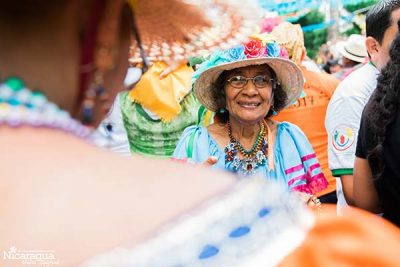 In the 90s, Irene López created the Popol Vuh “Cultural Center of Folklore and Dance”Which provides historical information services on our dance folklore to teachers and students in general, parents, dancers, choreographers and dance teachers. As well as seminars, workshops, trainings, conferences, talks, consultancies and more.
In the 90s, Irene López created the Popol Vuh “Cultural Center of Folklore and Dance”Which provides historical information services on our dance folklore to teachers and students in general, parents, dancers, choreographers and dance teachers. As well as seminars, workshops, trainings, conferences, talks, consultancies and more.
Joy for Life Carnival. It began in Managua in 2002, with the aim of giving the people of Nicaragua an event in which to demonstrate the waste of culture that the country has.
National Parade on Avenida De Bolívar a Chávez. In September, students from different schools in Managua and other parts of the country gather in this place to show their care and dedication in honoring Nicaragua.
In 2016, the thousands of families attending enjoyed the presentation of The Güegüense, a work that portrays the culture of Nicaraguans.
Some murals are part of the Cultural Heritage of Managua
Pre-Columbian Mural Laguna de Asososca. It is one of the first evidences of the expression of muralism in Managua and in the world. It is the pre-Hispanic pictograph found on the walls / rocks that border the Asososca lagoon. There are several pictographs, one of the most famous is the Feathered Serpent, which rises 6.65 meters from the base of the natural slope of the lagoon in a spiral shape. The Feathered Serpent is one of the most important symbols of Mesoamerica.
Mural "The Prometheans”. This wall covers 42 square meters and is designed in the form of a triptych. Through allegorical figures it represents the Mexican and Nicaraguan revolution and the future of a better world. Made by Canadian muralist Arnold Belkin, it was inaugurated in 1987. It is located in the Palace of Culture.
Anniversary Mural of the 1972 Managua Earthquake. It is located in the Palace of Culture, on the second floor. The mural is five meters high, by 11 meters. long, it presents three narrative sequences, the first presents a panoramic view of Managua before the earthquake, the second represents the earthquake and a last sequence narrates the future of Managua.
High Relief Murals, "Mural del Cristo". Monumental painted and sculpted mural on the main altar of the Church of Santo Domingo. Sculpted in iron and cement by the famous sculptor Fernando Saravia, the sketches were designed by the master Rodrigo Peñalba. It is considered a magnificent monumental for its artistic quality and its content. Located south side of Colegio Loyola Km 2, north highway.
Mural in homage to the Discovery of America and the universal poet Rubén Darío. Made by Rodrigo Peñalba, father of modern painting in Nicaragua. They are located in the Blue Room of the National Palace of Culture.
Murals “Pre-Columbian Tiangue Market"And "Popular Market". Both of the master Leoncio Sáenz, great master of drawing. The two murals represent in a magnificent way the typical Nicaraguan popular market and the indigenous tiangue. They were made in 1960. They are located in the La Colonia supermarket in Plaza España.
Mural "The Crucifixion". It is made up of 36 works of sculpture, mosaic, ceramics and murals, it is a true monumental artistic complex, it was inaugurated in 1992, within the framework of the 500 years of Indigenous, Black and Popular Resistance.
Located in the Monsignor Oscar Arnulfo Romero Spirituality Center, at Km 15.5 of the southern highway in Managua.
Historical-cultural points of interest
Archaeological Site Museum "Footprints of Acahualinca": This site exhibits the earliest evidence of human beings in Nicaragua, which were dated by carbon 14 methods and date approximately 6,000 years old, coming from an eruption of the Masaya volcano. Located from Iglesia Santa Ana 4 blocks west and 1 block north, in Managua
National Museum of Nicaragua Diocleciano Chaves: One of the most important art and culture exhibition centers in the country. It is made up of 15 exhibition halls which present in a didactic way our natural, paleontological, archaeological wealth, pictorial and sculptural works of Nicaraguan art, as well as handicrafts and cultural traditions.
It is open from Tuesday to Friday from 08:00 am – 05:00 pm; Saturdays from 09:00 am – 04:00 pm and Sundays from 10:00 am – 05:00 pm, it does not close at noon. Located in the National Palace of Culture.
"Julio Cortázar" Museum - Imaginary Museum of Nicaraguan Art: Nicaraguan art collection of the Julio Cortázar Museum, exhibited by the Nicaraguan Institute of Culture - INC, at the Rubén Darío National Theater since January 2009. It is dedicated to Nicaraguan plastic artists who have obtained national and international art awards. 45 works are exhibited including paintings, sculptures and graphic arts by 24 plastic artists. Open Monday through Friday from 09:00 am - 04:00 pm
San Pedro Cemetery Museum Park: Located in front of the northeast side of the central building of the Nicaraguan Social Security Institute, INSS. The cholera epidemics that ravaged Nicaragua in 1855 and 1867 gave rise to this place. The first hermitage named San Pedro was built on this site; in 1931 the earthquake knocked it down along with the tallest monuments.
It is one of the oldest cemeteries in the city where important figures of national history are found, as well as relevant figures of Central American history. In 1991 it was declared a Municipal Historical Heritage of Managua. Open Monday through Friday from 08:00 am - 04:30 pm.
Loma de Tiscapa Park Museum: This place was the center of the Somoza dictatorship, it was a prison and Presidential House. From this place it dominated the entire city of Managua.
He exhibits photos and historical documents in the outdoor spaces of the park and the remains of the equestrian statue of the dictator Somoza García and a tank that Mussolini gave him. It opens from Tuesday to Sunday from 09:00 am to 06:00 pm Located at the Hotel Crowne Plaza 2 c. to the south.
Julio Buitrago House Museum. Founded in 1980, the museum occupies the historic house where Julio Buitrago, Doris Tijerino and Gloria Campos, guerrillas of the Sandinista urban struggle, were found clandestinely.
Its façade still preserves on the walls the impacts of heavy artillery weapons that the National Guard directed for his assassination. Visit it from Monday to Friday between 08:00 a.m. - 12:00 p.m. and from 01:00 pm to 05:00 pm on Saturdays groups are attended with prior programming. It is located in the Julio Buitrago neighborhood behind the Maxi Palí supermarket, northwest of Managua.
Picture gallery of the Central Bank of Nicaragua. It is the most valuable collection of ancient and modern paintings in Nicaragua. It ranges from works by anonymous authors from the colonial era to contemporary painters. In 1998, it was declared Cultural Heritage of the Nation. It is open from Monday to Friday from 08:30 am to 04:00 pm, located in the Rubén Darío Library, in the Central Bank of Nicaragua, (BCN).
Violeta Barrios de Chamorro Numismatic Room. This room displays the coins and bills that have circulated in Nicaragua from colonial times to the present: from cacao to Cordoba. Located in the Rubén Darío Library, of the BCN. Serves the public from Monday to Friday from 08:30 am - 04:00 pm
Museo Replicas Paseo Xolotlán: it is a set of five replica museums founded in 2015: Rubén Darío Archive Museum, Rubén Darío Birthplace, Augusto C. Sandino House Museum, Museum of the Army Defender of National Sovereignty and Museum of the Hacienda San Jacinto House; all set at the time. It works from Monday to Friday from 11:00 am - 09:00 pm, Saturday and Sunday from 9:00 am - 09:00 pm
Carlos Fonseca Sandinista Victory Museum Park. It is an open space museum, inspired by the libertarian deed of General Augusto C. Sandino and Commander-in-Chief Carlos Fonseca Amador. It exhibits photos of the history of the popular insurrection against the Somoza dynasty between 1978 and 1979, but which has deep roots in the nationalist and anti-imperialist struggle started by Sandino in the 30s and continued by the Sandinista National Liberation Front in the 60s and 70s. , culminating in the liberation of Nicaragua on July 19, 1979.
This museum is dedicated to the memory of all the popular combatants who gave their lives for the liberation of Nicaragua. Open from Monday to Sunday from 08:00 am - 05:00 pm It is located on the north side of the Antiguo National Stadium.
In Managua, in the Roberto Huembes Market there is a section dedicated to the sale of Nicaraguan handicrafts, finding a variety of wood, cloth, palm weave, clay, marble stone, embroidery, footwear, leather and others; you can also delight your palate with donuts from different parts of the country and popular confectionery. Located on the Pista de la Solidaridad, southeast of Managua, open from 08:00 am - 06:00 pm
Characters who contributed to the cultural development and plastic arts of Nicaragua
Teacher Armando Morales Sequeira. Conceived as the most universal Nicaraguan painter, he was born on January 15, 1927 and died in 2011. In the 80s he was the representative of our country before UNESCO.
Nicaraguan painter recognized with the Ernest Wolf award as the “Best Latin American Artist”. His work is exhibited in different galleries around the world, including the Claude Bernard Gallery in Paris, the Museum of Modern Art in Mexico or the Belcher Gallery in San Francisco.
Some of his works are exhibited in the Pinacoteca of the Central Bank of Nicaragua. Armando Morales lived in New York, Paris and London. In the last years of his life, he spent part of his time between Paris and Madrid.
Teacher Rodrigo Penalba. Nicaraguan painter, father of modern art in Nicaragua, born in León. In 1925 he studied painting in Europe, the United States and Mexico. It can be described as a cultural landmark. Founder and director of the School of Fine Arts of Nicaragua (1960-1973), he taught, encouraged and organized the Nicaraguan pictorial movement. He is the pioneer and the quintessential teacher of our plastic arts.
He died in San Pedro Sula, Honduras, on June 03, 1979. Some of his works are exhibited in the Pinacoteca of the Central Bank of Nicaragua.
Alexis Arguello. (April 19, 1952 - July 1, 2009). The first world boxing athlete who managed to win three world professional boxing championships in different categories, he was mayor of Managua and an example for the Nicaraguan youth for his tenacious work, in his simplicity he established his greatness, today a monumental sculpture stands in his honor in the Plaza de Las Victorias, at Km. 4 road to Masaya.
Roman González. Known as "El Chocolatito", he is also a proud athlete of the country, he is our first World Champion, his modesty and his courage place him among the best boxers in the world, for the youth he is an idol, a motivator of joy and hope.
Gallery
Tourist Offer Map
